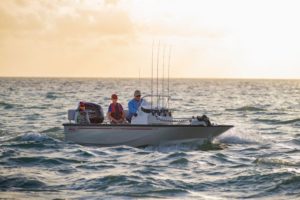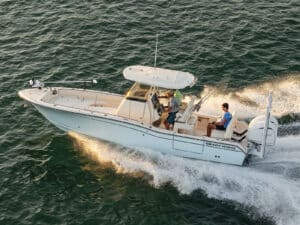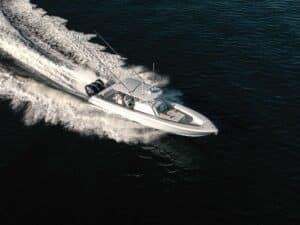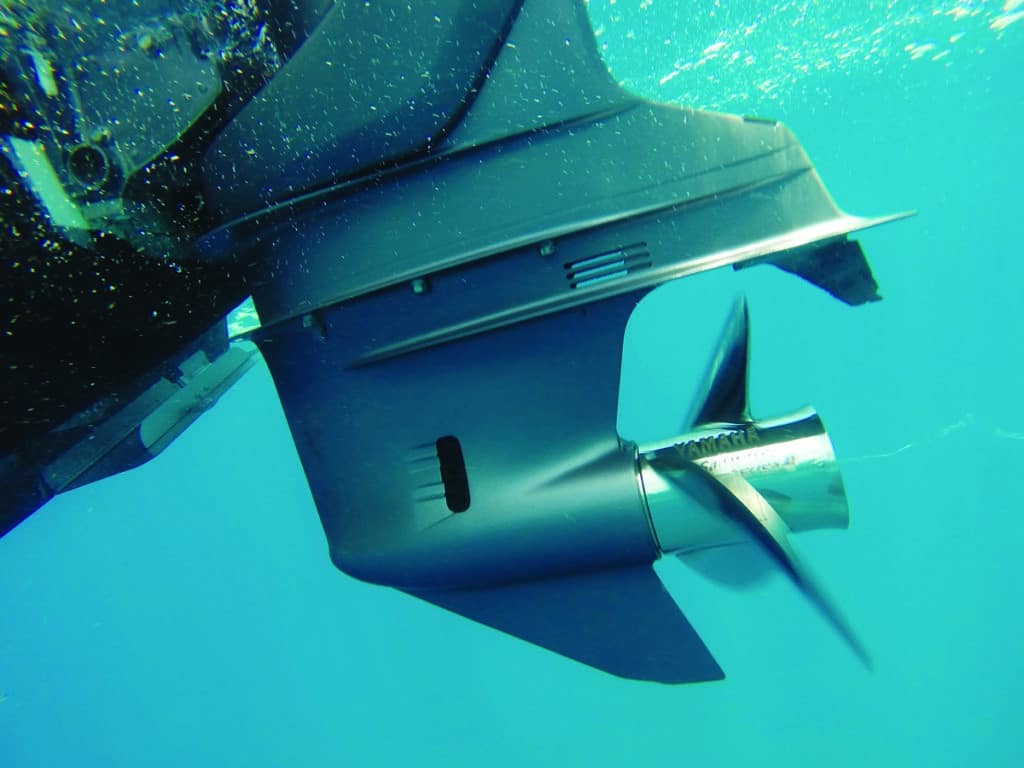
Most outboard motors — 90 percent by some estimates — use three-blade propellers, and they offer strong performance for most boating applications. Yet, can boating anglers expect better performance from a four-blade prop? The answer is yes — and no — according to major outboard brands such as Honda, Mercury, Suzuki and Yamaha.
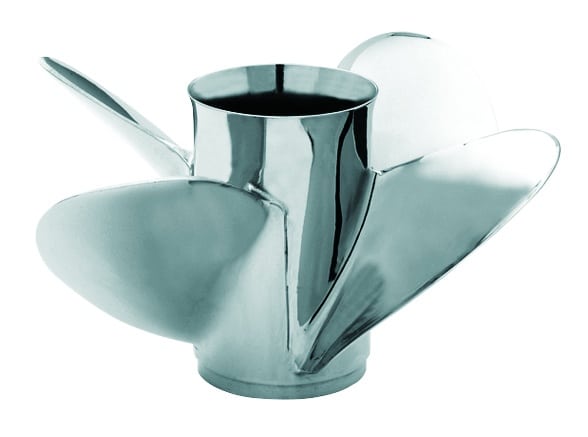
Three-blade propellers are popular because they tend to offer a performance compromise, a pleasing (or at least satisfactory) blend of acceleration, fuel efficiency, lift and speed, says David Meeler, marine product information manager for Yamaha Outboards.
Yet, if you want to improve one of these attributes over another acceleration, a four-blade might help, Meeler says. “Just be aware that performance gains in one area can mean performance losses in another,” he adds. “It’s all about what’s most important to you.”
Meeler adds an important caveat: Before changing props, make sure there are no other factors adversely affecting performance, such as hull fouling, lack of adequate power, or improper weight distribution, he reminds boating anglers. Only after you are confident that the boat and power are well-tuned should you then move on to trying different propellers.
Define Your Goals
The first step lies in deciding which performance attributes you desire most. For example, the captain of a flats boat might want to enhance the boat’s ability to pop up on plane more quickly. Or perhaps he’s looking to add hull lift for running in very shallow water. “Often, a four-blade propeller is the ticket,” Meeler says. “The additional blade area grips the water better, allowing for quicker acceleration.” The greater blade area also lifts the hull more while underway, which minimizes draft.
However, there is a tradeoff. The additional drag generated by an extra propeller blade can also reduce top speed, Meeler advises.
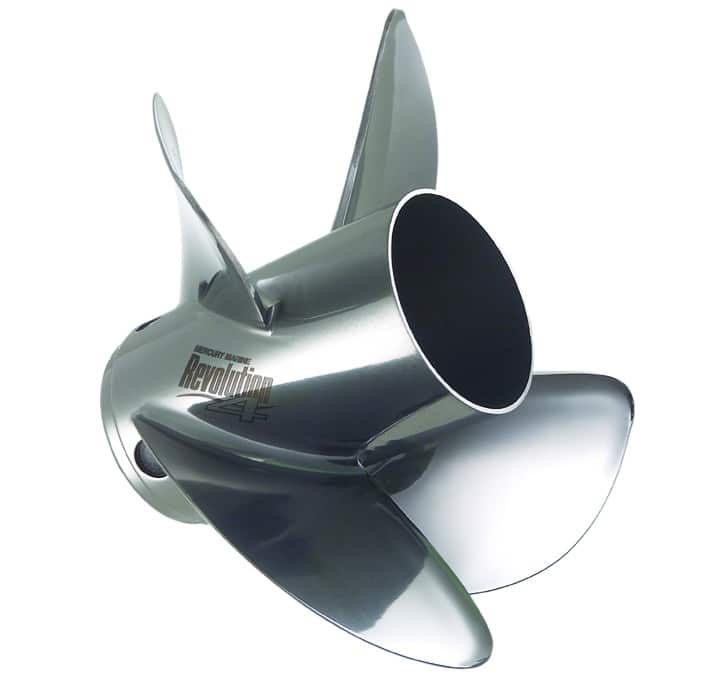
Some boating anglers might want more speed, but today many are seeking greater fuel efficiency for their boats, as well as the fishing range that comes with better mpg. “This is where a four-blade prop can really help,” says Jim Loftus, Department Head, Senior Manager, Strategic Planning, American Honda Motor Co.
“The extra lift of four-blade props helps keep a relatively heavy center-console boat on plane while traversing rough seas in the mid range, say around 3,000 rpm,” Loftus points out. “That’s far more efficient than slogging along off-plane, and a lot more comfortable and safe than pushing up the speed in heavy seas.”
Also, boats tend to gain weight as they age, usually as the result of adding fishing accessories, hardtops, towers, livewells, coolers and other gear over the years. “The propping that worked just fine when the boat was new might not be adequate 10 years later,” Loftus explains. “Four-blade propping might be just what you need to add lift to the older, heavier boat.”
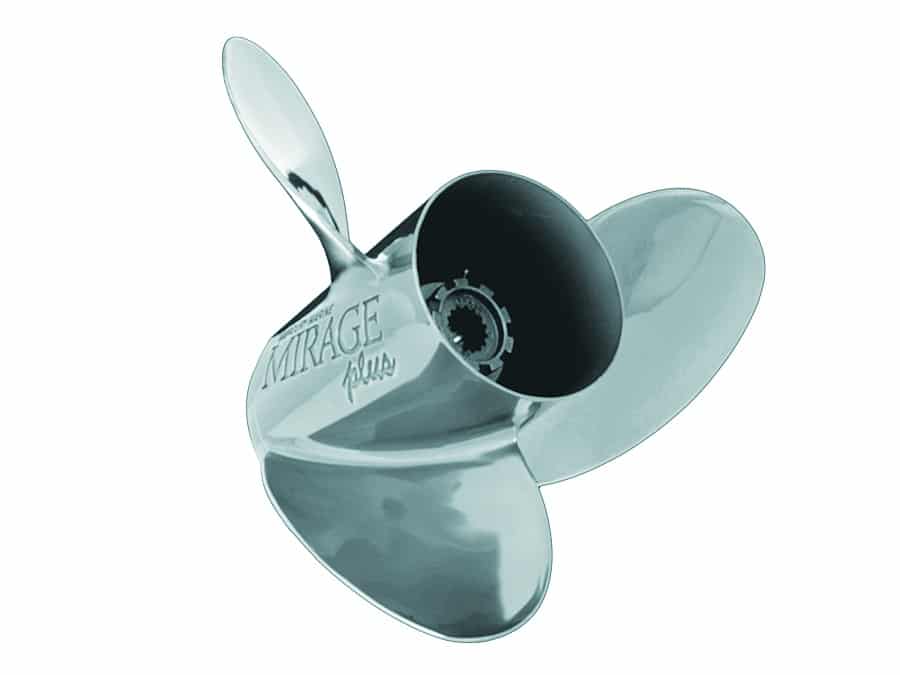
Ventilation Issues
Ventilation — the tendency of the blades to lose their “bite” — often occurs when props are immersed in aerated water, such as the wake of a stepped-hull boat. On other boats, aeration might occur as a result of poorly positioned water intakes or large through-hull transducers.
A four-blade is less likely to ventilate in aerated water, simply because it has more blades to grab the water. That’s why you see some stepped hulls equipped with these props.
Four-blades can resolve other ventilation issues. For example, if the jack plate on a bay boat is too high, the prop tends to lose its bite and ventilates. The grip of a four-blade allows a bay-boat captain to maximize the height of the outboard, and cross flats that might not be navigable with a three-blade prop.
Seek Guidance
Assuming you want to improve some aspect of performance, your dealer and his service department can help you make a decision, Lufton says. “But at the same time, it’s important to communicate your expectations so the dealer can recommend props to achieve your performance goals.”
Another good source of guidance includes outboard-company websites. The Yamaha Prop Selector at yamahaoutboards.com, for example, contains a wealth of information, including a 7-step process for narrowing down the selection to best candidates.

The Prop Calculator at marine.honda.com and the Prop Selector at mercurymarine.com also offer interactive sections that help boaters calculate and choose the most appropriate props based on boat type, performance goals and outboard power.
Seeking the real-world experience of owners who run your boat model can also prove helpful, says Dave Greenwood, general manager for the Suzuki Marine Technical Center USA. “Look for boats at the marina or launch ramp and ask the captains about the props they are running,” Greenwood suggests. Try to pare down the field to three or four candidates.
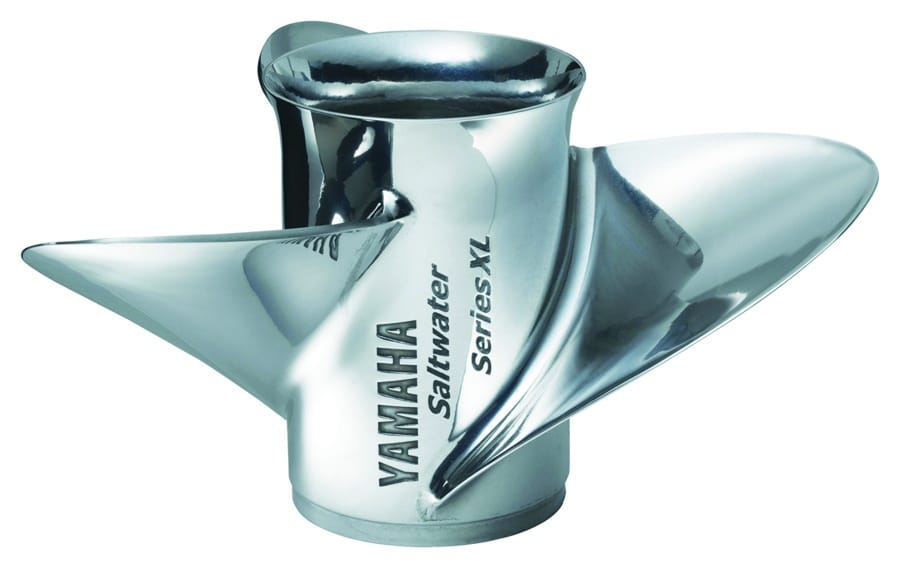
Test and Evaluate
An important step is to procure propellers for testing. You might be able to work with your dealer on this. Some dealers also have rental programs. Most of the time, however, you need to purchase test props from a dealer. (That’s when you will find that four blades cost more than three.) “Just make sure there’s an understanding that you plan to return most of them undamaged for a refund after testing,” says Greenwood.
It is important to test each prop under the same conditions, says Yamaha’s Meeler. “A simple variable such as warming air temperatures can affect speed as much as 5 percent,” he explains. Also, make sure the water conditions are the same. For the sake of ease, try to test on flat water.
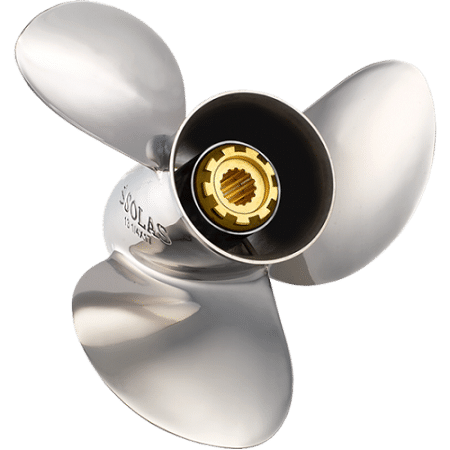
When testing, make sure the boat is fueled and loaded as if you were going fishing. That means full of ice and tackle, full livewells and full crew, if possible. It’s also important to use the same criteria for each prop test, and to make this simple, Yamaha offers a detailed Propeller Performance Evaluation form that you can obtain from an authorized Yamaha Outboard dealer. Use the form to record performance data for later evaluation.
For consistent and accurate results, use a GPS (found aboard most fishing boats) for recording boat speed, a stopwatch (like the one on a smartphone) for timing acceleration, a fuel-flow meter (found on many fishing boats) for determining fuel efficiency, and a tachometer.
Ultimately, these tools, resources and guidelines — plus some on-water testing — can help lead you to the right propeller, be it three- or four-blade, that enhances the performance characteristics you desire most in your saltwater fishing boat.
Read Next: The Fine Art of Making Propellers for Outboards
Diameter and Pitch
Two key measurements of a propeller are diameter and pitch. Pitch is the theoretical distance (e.g., 19 inches) a propeller will move a boat with one revolution of the prop shaft. Generally speaking, the diameter of a four-blade prop is smaller than that of a three-blade prop with the same pitch. This helps a four-blade spin up quickly and allows the motor to rev as high as it would with a three-blade of comparable pitch. Nearly all saltwater props for outboards are made from stainless steel.
Evaluating for Lift
Though not measured directly, lift is the inverse of minimum planing speed — the lower the minimum planing speed, the greater the lift. So, one way to evaluate props for lift is to measure the lowest speed at which each one enables a boat to plane. That prop that helps the boat at lowest speed of all is the one that should provide the greatest lift. Make sure you test in a marine environment rather than your local lake, as salt water has greater buoyancy than fresh water.

